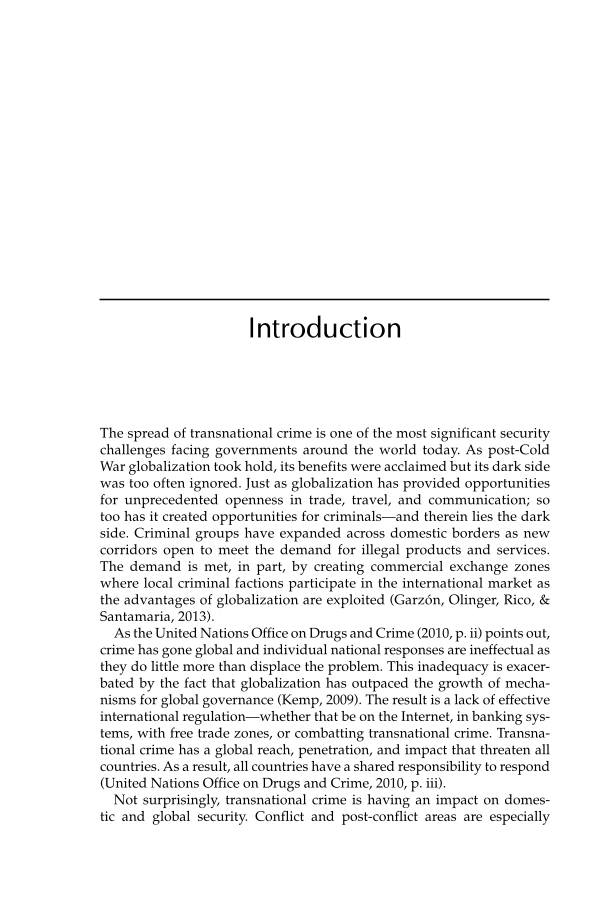Introduction
The spread of transnational crime is one of the most significant security
challenges facing governments around the world today. As post-Cold
War globalization took hold, its benefits were acclaimed but its dark side
was too often ignored. Just as globalization has provided opportunities
for unprecedented openness in trade, travel, and communication; so
too has it created opportunities for criminals—and therein lies the dark
side. Criminal groups have expanded across domestic borders as new
corridors open to meet the demand for illegal products and services.
The demand is met, in part, by creating commercial exchange zones
where local criminal factions participate in the international market as
the advantages of globalization are exploited (Garzón, Olinger, Rico, &
Santamaria, 2013).
As the United Nations Office on Drugs and Crime (2010, p. ii) points out,
crime has gone global and individual national responses are ineffectual as
they do little more than displace the problem. This inadequacy is exacer-
bated by the fact that globalization has outpaced the growth of mecha-
nisms for global governance (Kemp, 2009). The result is a lack of effective
international regulation—whether that be on the Internet, in banking sys-
tems, with free trade zones, or combatting transnational crime. Transna-
tional crime has a global reach, penetration, and impact that threaten all
countries. As a result, all countries have a shared responsibility to respond
(United Nations Office on Drugs and Crime, 2010, p. iii).
Not surprisingly, transnational crime is having an impact on domes-
tic and global security. Conflict and post-conflict areas are especially


























































































































































































































































































































































































































































































































































































































































































































































